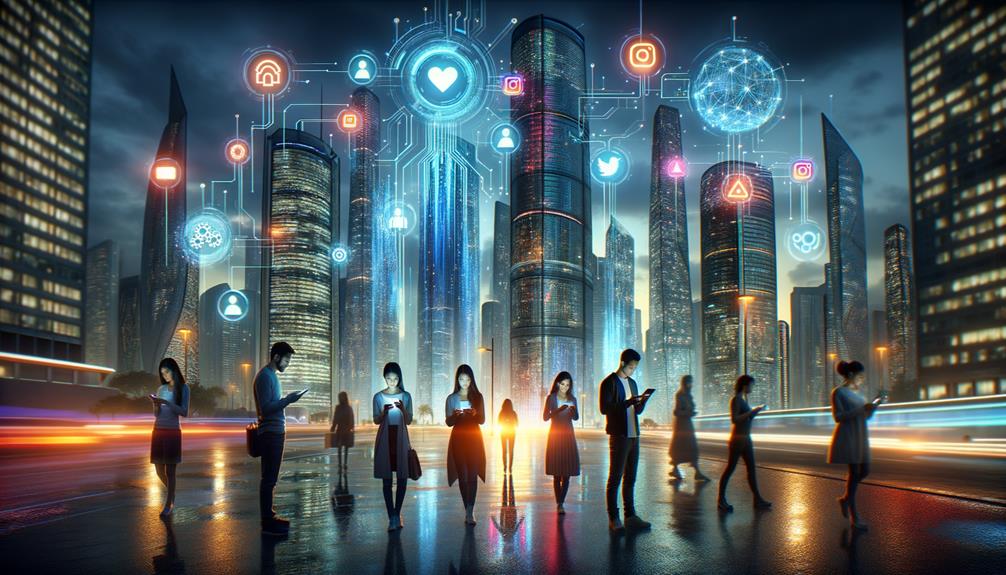

You’re on the cusp of a revolution in social media, with 2024 poised to deliver unprecedented advancements in AI-driven content creation, video dominancey social commerce that will redefine how you interact with your audience. You’ll need to adapt to changing user behaviors, leverage AI tools for personalized content, and master short-form video strategies to boost engagement. With emerging trends like social commerce and SEO, you’ll also need to prioritize authenticity and transparency in your publicidad[3]. As you navigate these shifts, you’ll discover new opportunities to enhance engagement, drive conversions, and stay ahead of the curve.
As you navigate the ever-changing social media landscape, an essential shift is underway, driven by technological advancements, changing user behaviors, and the escalating demanda[4] for more authentic and immersive experiences.
Your social media strategy must adapt to emerging trends, such as the integration of AI and social commerce, which are revolutionizing user experiences. Brands are now collaborating with content creators in the thriving creator economy to enhance authenticity.
However, problemas de privacidad and misinformation persist, emphasizing the need for proactive measures. To stay ahead, focus on escucha social and tailor your content creation accordingly.
You’ll see a significant surge in AI-driven content creation in 2024, with AI tools for edición de imágenes y cliente[5] soporte expected to increase by 260% and 318%, respectively.
As you leverage these tools, you’ll enhance your visual content and interactive experiences on social media platforms. AI algorithms will help you automate content production, making your marketing strategies more efficient and relevant.
Con personalized content experiences, you’ll drive user engagement through tailored recommendations and interactive features. Additionally, AI will aid in moderación de contenidos, ensuring community safety and authenticity.
However, as AI-generated content becomes more prevalent, brands need to establish guidelines to maintain trust with their audiences.
Because short-form videos under 60 seconds have become the go-to format for 82% of consumers seeking product information, video content is poised to dominate social media in 2024. You’ll want to prioritize video in your social media strategy to keep up with the trend. Here’s a snapshot of what you can expect:
| Plataforma | Video Length | Tasa de compromiso |
|---|---|---|
| TikTok | 15-60 seconds | 30% higher than long-form |
| Instagram[6] Carretes | 15-60 seconds | 25% higher than long-form |
| Video Podcasts | 30 minutes to 1 hour | increasing reliance on video for SEO |
To maintain audience retention, integrate both short and long-form video content into your social media strategy. With TikTok and Instagram Reels leading the charge, it’s time to rethink your approach to video content and make it a key part of your social media plan.
Nearly 55% of social media users are now interested in making purchases directly on these platforms, a trend that’s pushing brands to rethink their e-commerce strategies and make social commerce a priority.
You need to integrate e-commerce features into your social media marketing to capitalize on this trend. Contenidos generados por los usuarios is key, as it builds trust and drives consumer purchases, as seen with hashtags like #TikTokMadeMeBuyIt.
Don’t forget to optimize your content with palabras clave y hashtags relevantes, as 40% of Gen Z prefer using social platforms like TikTok over Google[7] for information searches.
By focusing on discoverability and creating engaging shopping experiences, you’ll enhance brand awareness and increase user engagement.
Utilize techniques like alt text and optimized hashtags to maximize reach and conversions.
By 2032, the AI market in social media is expected to skyrocket to USD 27.67 billion, underscoring the critical role AI will play in shaping digital strategies over the next decade.
As you navigate these trends, you’ll notice a significant surge in AI adoption for customer support, with a 318% increase expected in 2024.
Generative AI will also become more prevalent, enabling hyper-personalized marketing campaigns through enhanced ad targeting.
However, this growth also raises concerns about authenticity and user data protection.
To address these issues, you’ll need to prioritize medidas de seguridad to safeguard community trust on social platforms.
As you develop your social media strategy for 2024, authenticity and transparency in advertising will become essential elements in building trust with your audience.
Consumers prefer brands that showcase real, unfiltered content, with 70% feeling more connected to authentic brands. To tap into this trend, focus on genuine interactions and user-generated content (UGC) that highlights your brand’s values and practices. This approach won’t only boost engagement rates but also make your brand more relatable.
Be open about your business practices, and avoid excessive self-promotion, which 34% of consumers find off-putting. By embracing authenticity and transparency, you’ll create social media content that resonates with your audience and sets you apart from competitors.
Real brands, after all, crear confianza y drive loyalty.
With authenticity and transparency established as core elements of your social media strategy, you’ll want to turn your attention to the emerging trends that’ll shape the online landscape in 2024, from AI-driven content creation to personalized marketing and niche community engagement.
To prepare, consider these areas:
You’ll see social media evolve in 2024, prioritizing user experience through AI-driven content curation and addressing privacy concerns. Expect platform consolidation, increased user engagement, and a rise in marketing de influencers[1], realidad aumentada[2], and data analytics for community building, tempered by ethical considerations.
You’re likely referring to the AI Trend 2024 Report, which highlights a surge in AI adoption, emphasizing user engagement, content personalization, and ethical considerations, including data privacy, algoritmo[8] transparency, and social listening.
You’ll see AI revolutionizing social media through AI content creation, personalized recommendations, and automated moderation. AI will also enable emotion recognition, deepfake[9] detection, and influencer analytics, while enhancing chatbot engagement and sentiment analysis, prioritizing user privacy and algorithm transparency.
As you contrast yesterday’s static posts with today’s immersive experiences, you’ll likely notice a surge in short-form videos, niche communities, and social commerce, but don’t forget the growing concerns about algorithm transparency and mental health.